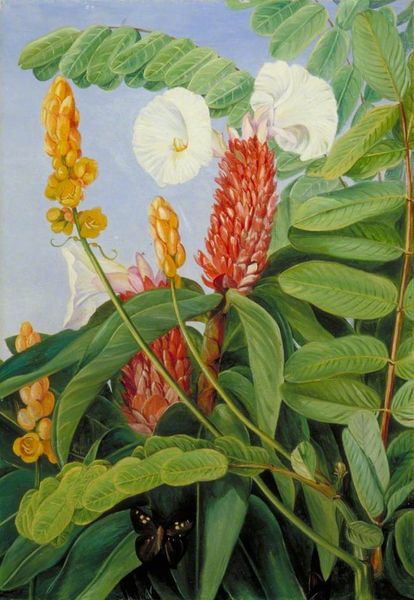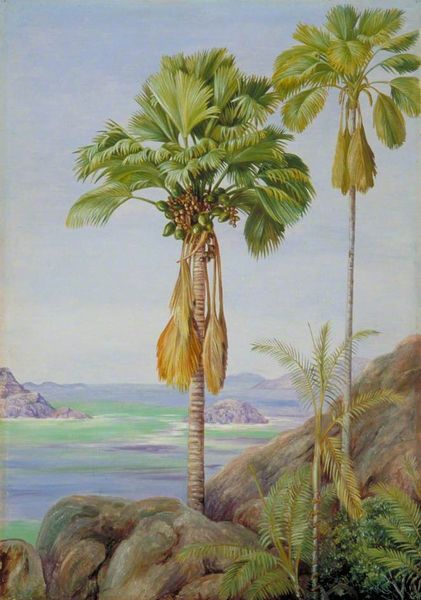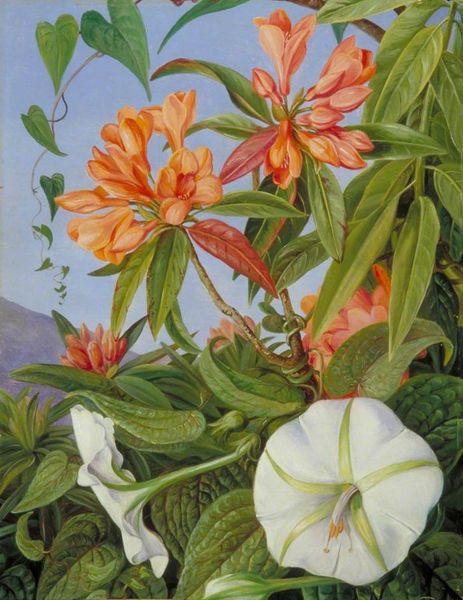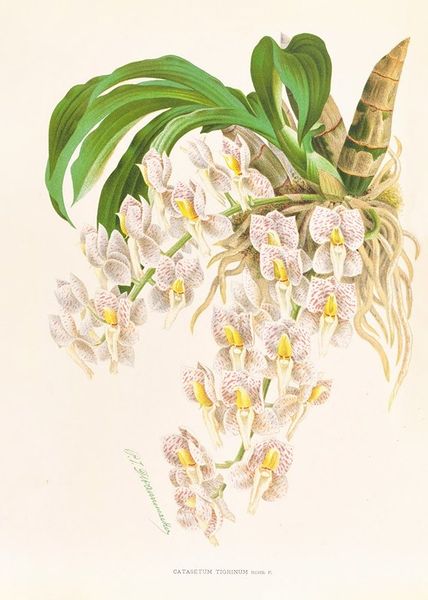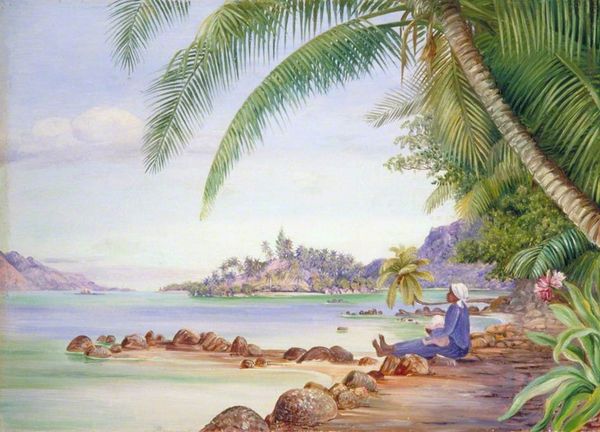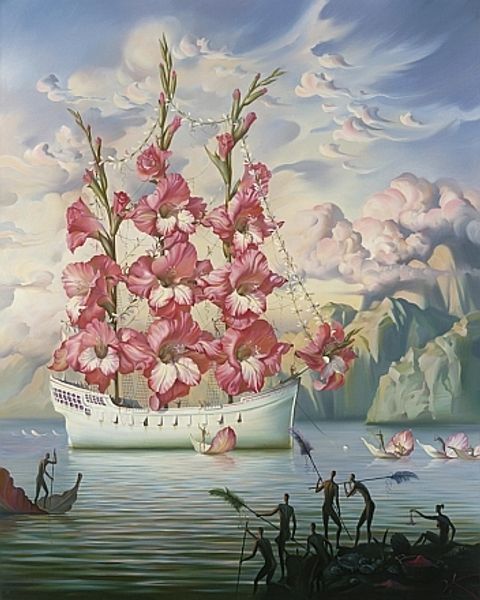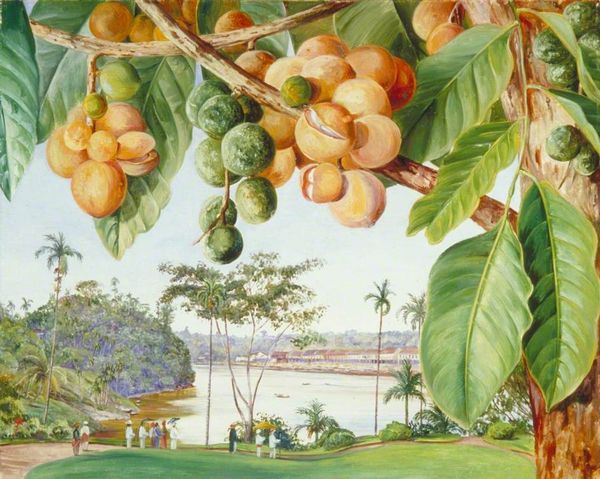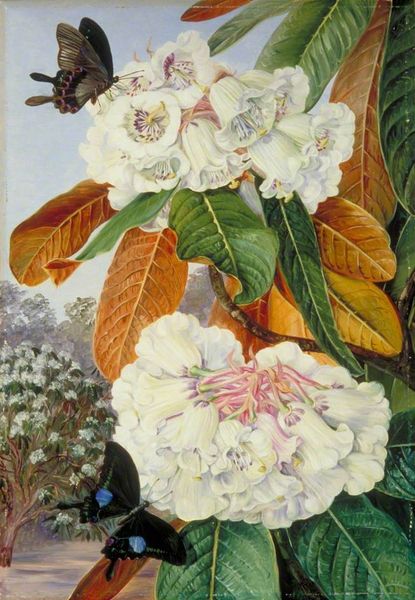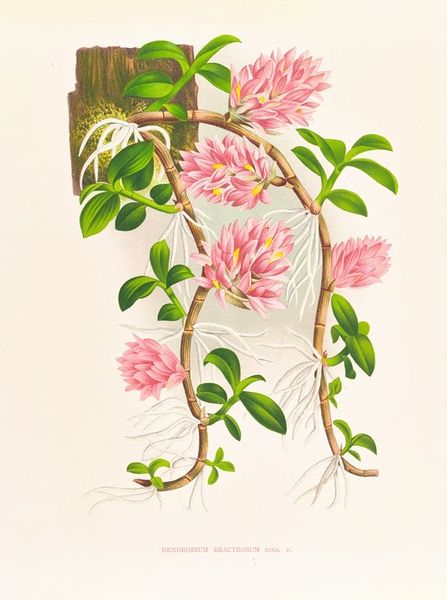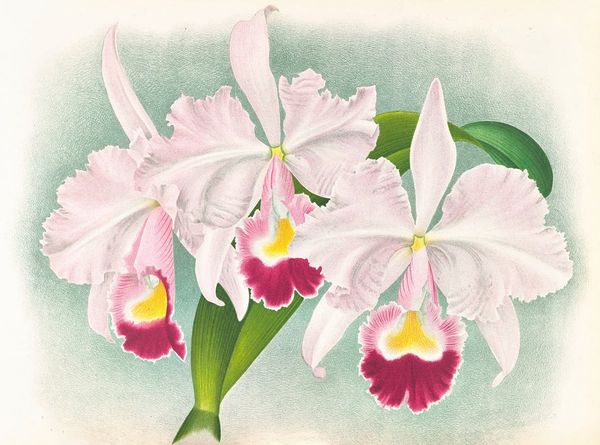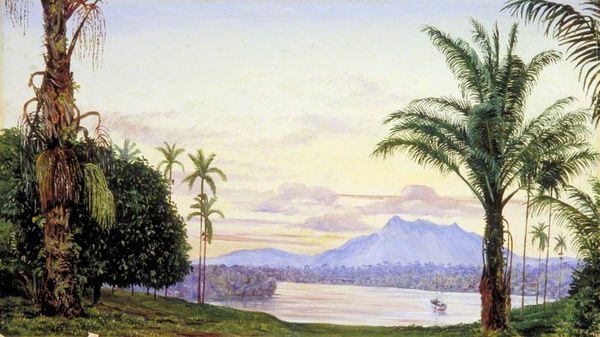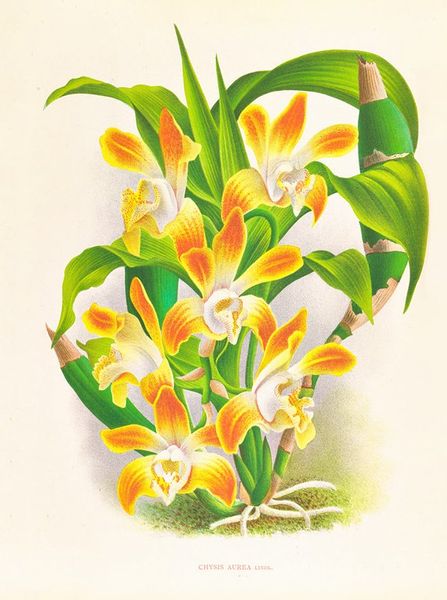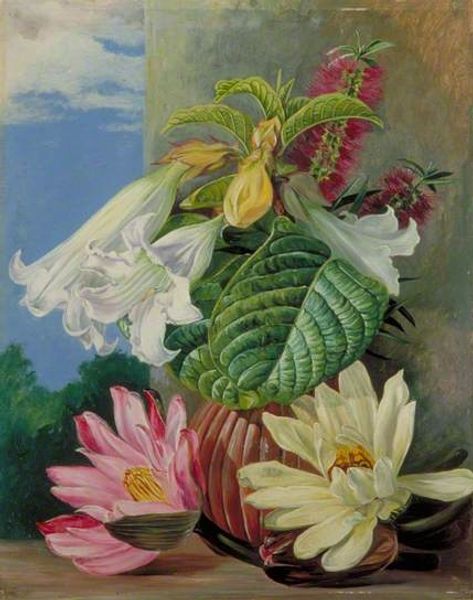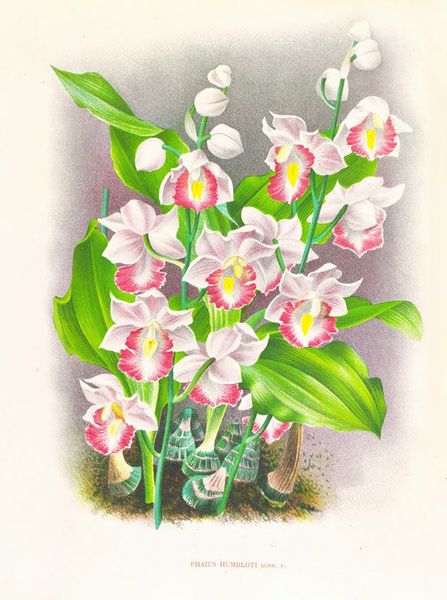
plein-air, watercolor
#
impressionism
#
plein-air
#
landscape
#
oil painting
#
watercolor
#
watercolour illustration
#
surrealist
#
watercolor
#
realism
Copyright: Public domain
Curator: It strikes me immediately how vibrant this painting is, yet also delicate. There’s an interesting contrast. Editor: Absolutely. What you’re responding to is Marianne North’s “Flowers of Jasmine Mango or Frangipani, Brazil,” created in 1873. North was quite the extraordinary woman for her time – a solo traveler and botanical artist. This watercolour and oil work gives us insight into both her artistic skill and her travels. Curator: It is fascinating how the floral foreground almost merges with the distant landscape in a seemingly continuous pictorial space. Tell me more about its technique. Editor: North employed plein-air techniques, capturing the light and colours directly from nature. Her commitment was to scientific accuracy but not without imbuing a certain emotional register through color choice. But this pursuit raises important issues about colonialism. North traveled widely, documenting plants in regions under colonial rule, and the gaze within such representations needs to be questioned. Who does this kind of representation ultimately serve? Curator: A crucial point. Considering the materiality though, the smoothness and blending are intriguing. She worked meticulously; those petals seem to shimmer. It certainly challenges our perceptions of craft, where perhaps this botanical illustration becomes less about scientific exploration and moves closer into the realm of an artwork that we appreciate for its technical mastery and delicate rendering. Editor: And the symbolic nature of flowers themselves is relevant, too. What meanings were assigned to these specific flowers during the Victorian era, and how might they intersect with notions of femininity, nature, and the exotic? Were these types of commodities sought after to be grown and studied “at home”, further reinforcing the wealth of European societies at the cost of others? Curator: It provides a lot to reflect upon, both through its aesthetic beauty, her vision and the complex, unequal power dynamics shaping North's life. Editor: Indeed, examining these historical contexts gives us much richer understanding, allowing us to question art's role in representing the world then, as well as the values of art institutions today.
Comments
No comments
Be the first to comment and join the conversation on the ultimate creative platform.
